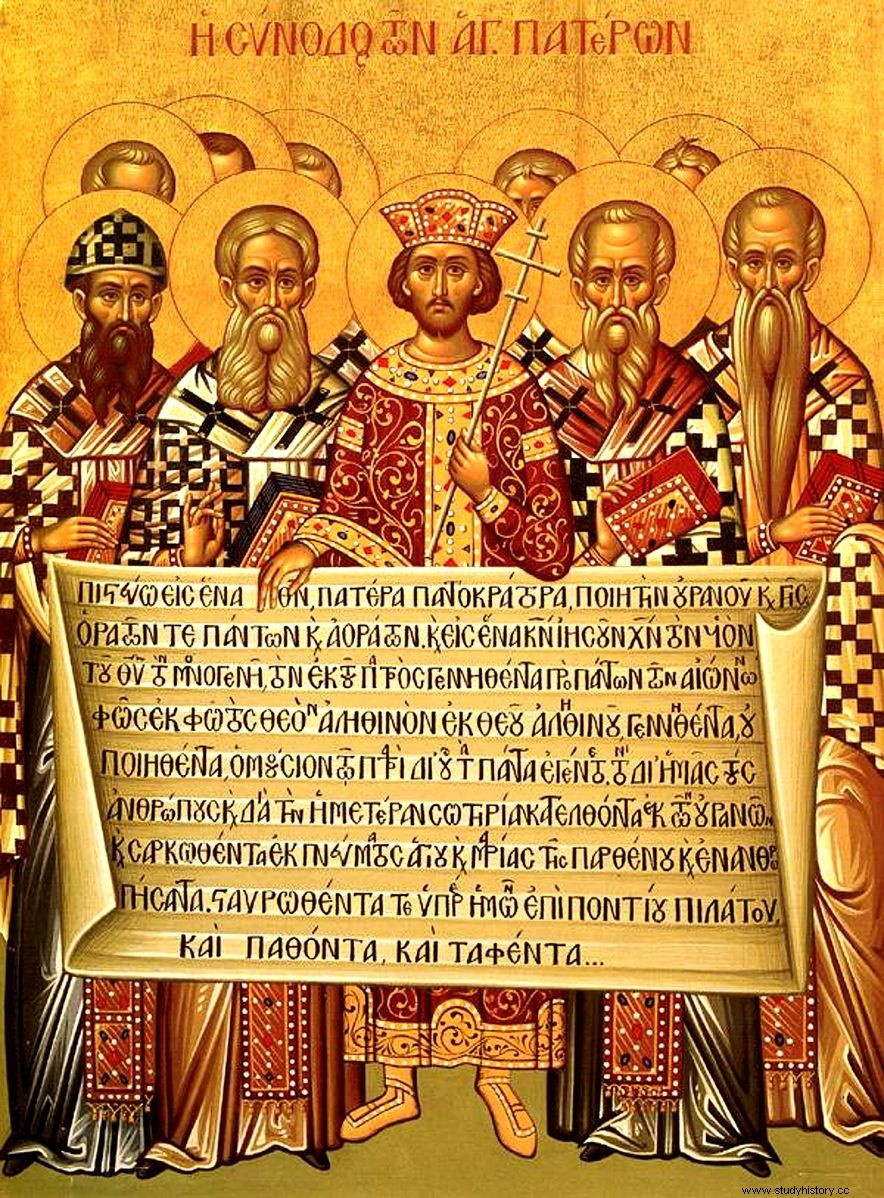In 313, the emperors Constantine and Lucinius, who ruled part of the Roman Empire, wanted to establish religious peace. In this regard, on June 13, 313 (thanks to a circular improperly called the “Edict of Milan”), they granted religious freedom, particularly to Christians who until then had been persecuted for their faith. From September 324, Constantine now rules the immense Roman Empire alone. Aware of the dissensions within the Christian religion and fearing a schism, he brought together all the bishops of the Empire at Nicaea between May 20 and July 25, 325.
May 20, 325 -July 25, 325

Characters
Constantine I st
Procedure
On May 20, 325, the ecumenical council (universal) brought together in Nicaea, in present-day Turkey, 220 bishops of the Empire; some great ones are however absent such as the pope. This meeting consists in settling the conflicts which oppose the various Churches and undermine the stability of the Empire. Indeed, Arius, a priest of Alexandria although excommunicated (that is to say rejected by the Church) preaches a different word which has a certain success. Among his words, he advocates the subordination of the Holy Spirit and the Son, Jesus, to God the Father. Jesus would therefore be the mediator between men and God, but would not be divine, just like the Holy Spirit. On the contrary, Christians advocate the consubstantiality of the Father, the Son and the Spirit, namely that they are of the same essence:the Son (Jesus) and the Spirit are therefore of divine nature. During this Council, the Nicene Creed, or Credo, was created. A symbol is a rallying sign, so the creed is a sign of recognition of Christians who share the same faith (“creed” meaning “I believe” in Latin). Compared to the already existing creed of the Apostles, that of Nicaea expressly affirms the consubstantiality of the Father, the Son and the Spirit. This is one of the most important points of the Council of Nicaea. The foundations of the doctrine are also defined, such as the rules of operation of the Church, discipline, the standardization of the date of Easter...
Consequences
During this Council, the doctrine advocated by Arius, Arianism, will be firmly condemned and the Creed, symbol of Nicaea affirming the consubstantiality of the Trinity, Father, Son and Spirit, becomes the profession of faith of the Christian Church. br />The involvement of the Emperor Constantine in this council shows the importance of the Christian religion in the Empire. The Nicaea Creed will be extended in Constantinople during the Second Council in 381 (therefore called the Nicaea-Constantinople Creed). Those who do not respect the Council of Nicaea are henceforth excommunicated. The purpose of the Council of Nicaea is to bring together and weld the different movements within the Christian religion. By becoming a common base, this religious unity ensures the stability of the Empire. It will be named state religion by the edict of Thessalonica promulgated by the emperor Theodosius the Great in 380.
